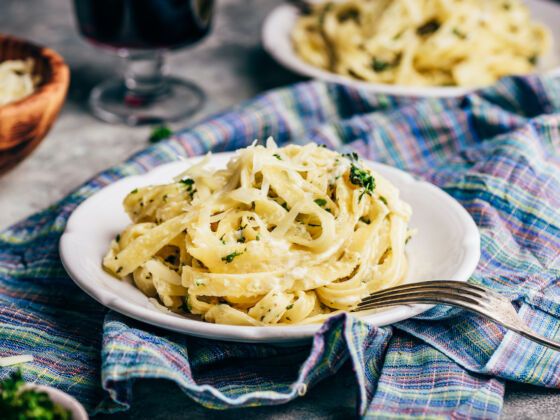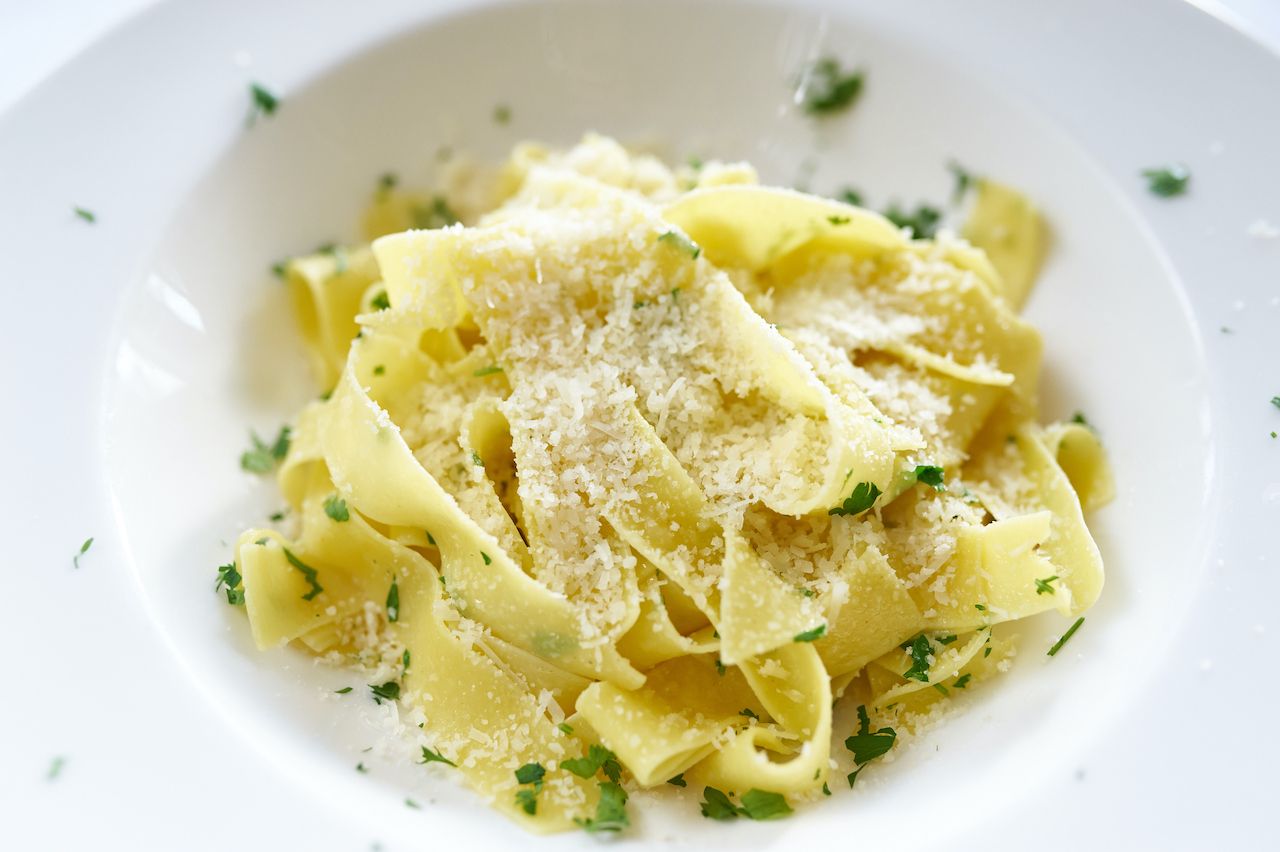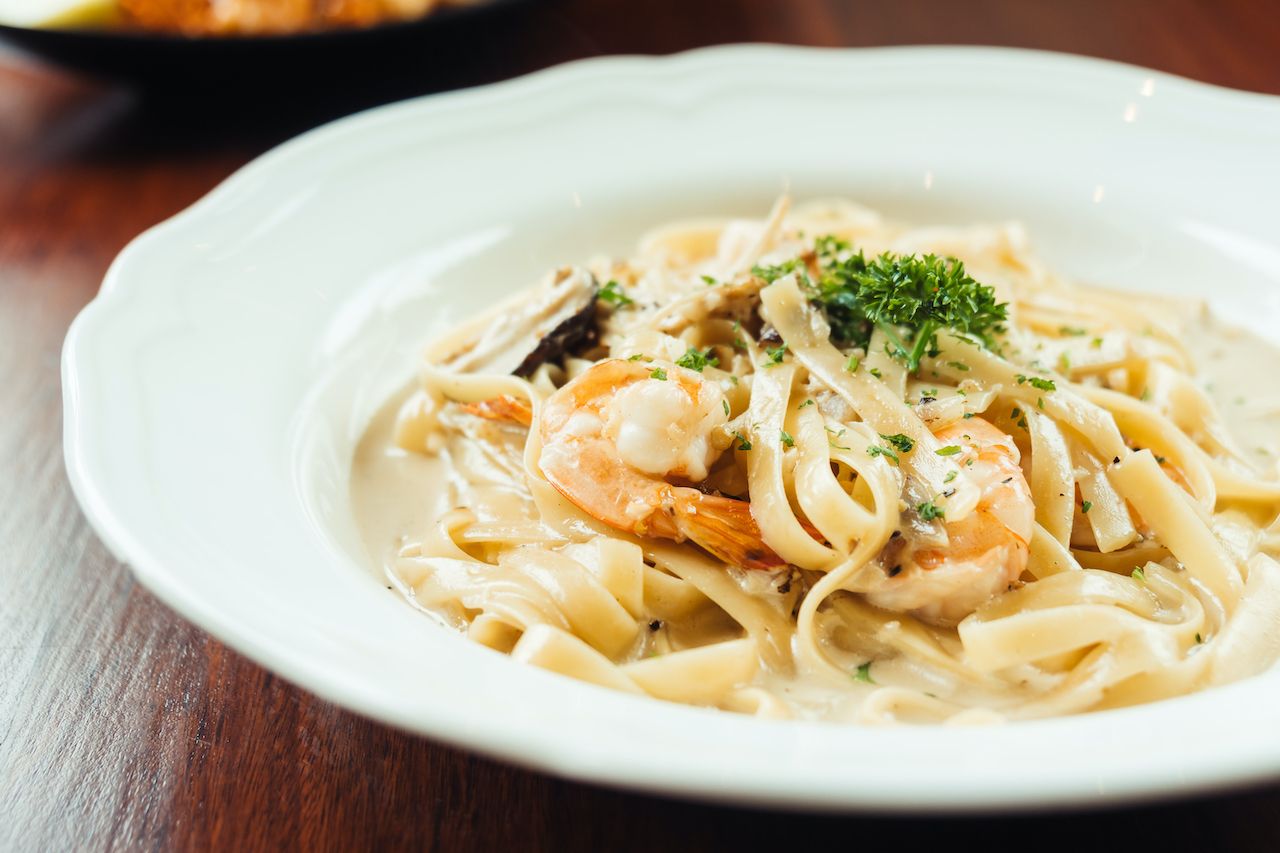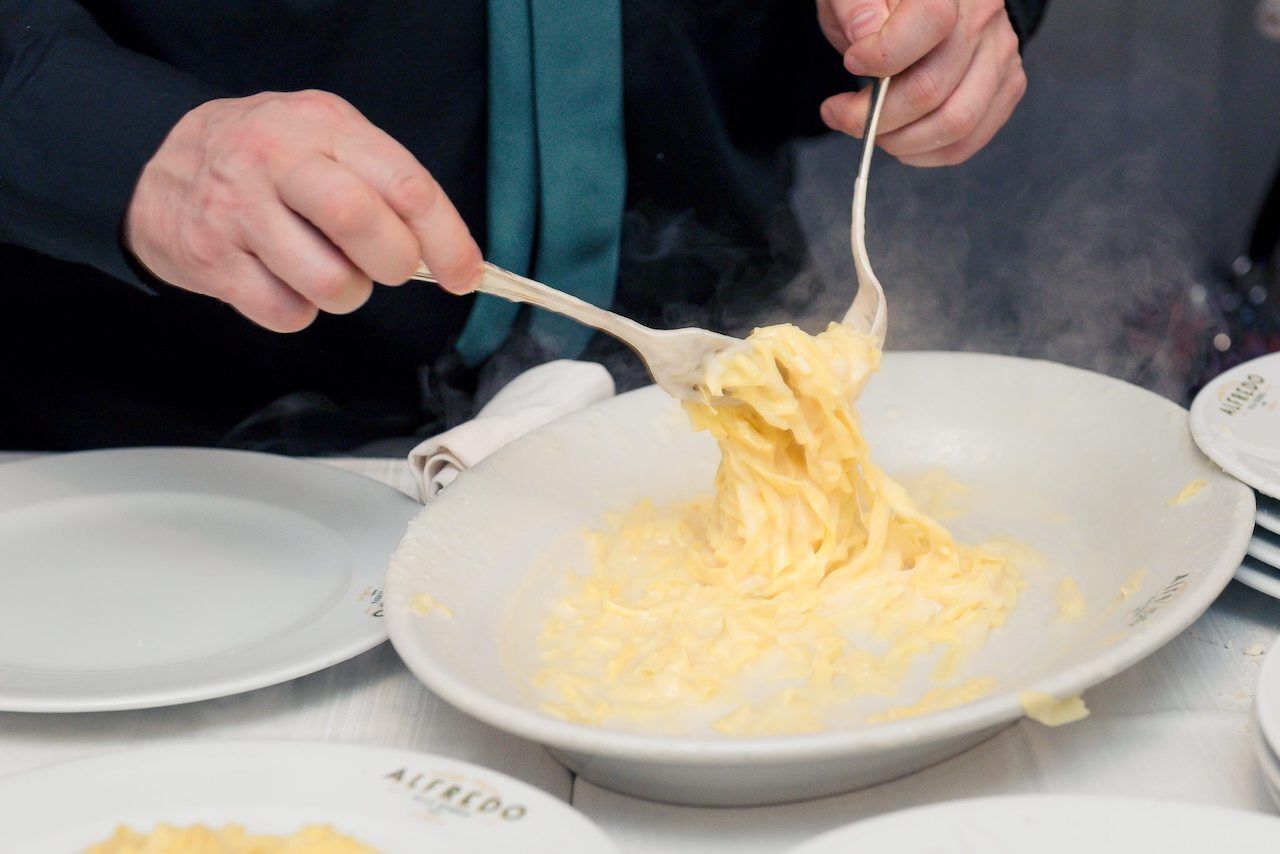For many, one dish instantly pops to mind at the mention of Italian-American cuisine: fettuccine alfredo. Beloved for its signature rich, thick, and luxuriously creamy white sauce (and derided for the exact same quality), some say it should be shunned for its lack of authentically Italian characteristics. Yet for Americans, the heavy, filling, and slightly greasy dish is considered a classic that’s found on both Olive Garden menus and at upscale restaurants in centers of Italian immigration like New Jersey.
There’s still debate over whether or not fettuccine alfredo can really be included in the pantheon of genuine Italian cuisine. Once you look at the history of the dish, you realize the story is more complicated than you might think. Here’s everything you need to know about the origins of this controversial but beloved dish, and the differences between the original fettuccine alfredo and its American counterpart.



